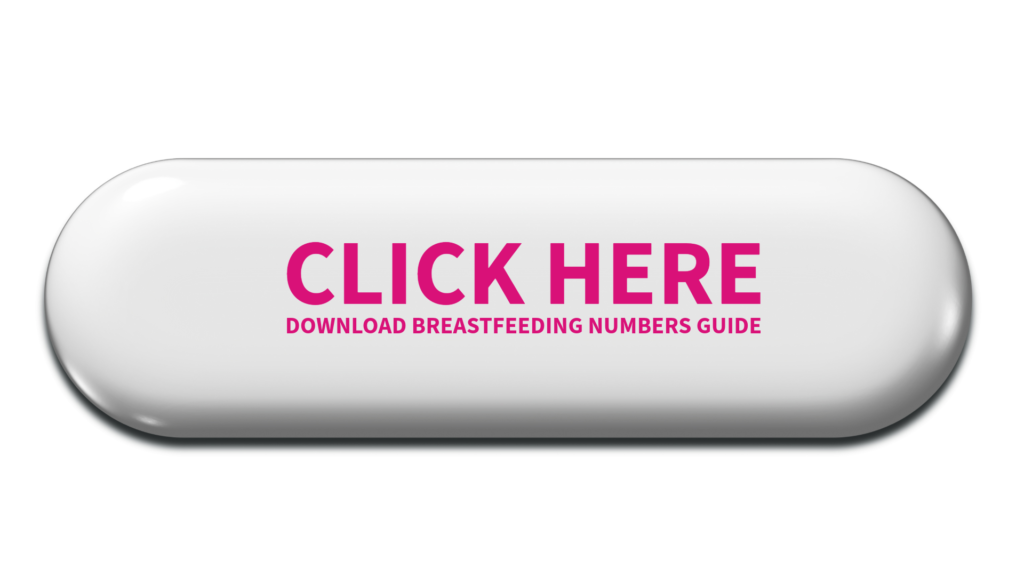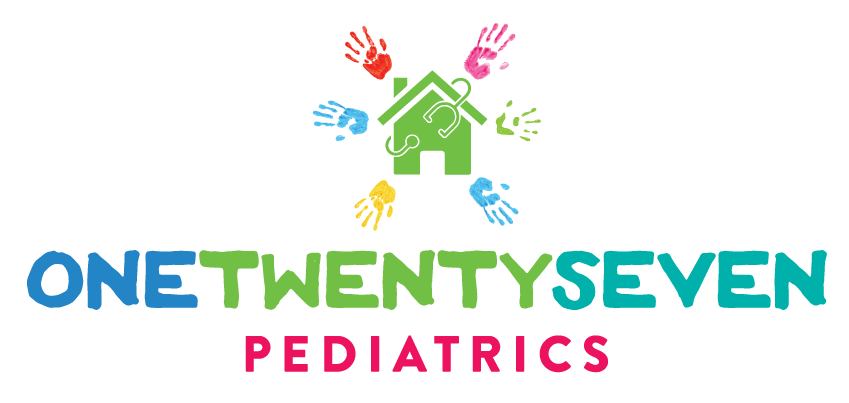Early in the morning on her second day as a mother to a new baby, Sarah sat sobbing in her hospital bed. She was feeling defeated by the fact that her new baby was refusing to latch to her breast and feed. As a seasoned mom who nursed her first child for 18 months, this devastated Sarah. Her imagination started getting the best of her as she was playing through all of the possible scenarios in her head. Each scenario ended with her feeling like a failure as a mother.
As a pediatrician and lactation consultant, I can tell you that Sarah is not alone. I have held space for many women as they sob over their new baby who refuses to latch to the breast.
In this article, we will look at the reasons for newborn latch refusal and troubleshoot some ideas on how to solve this problem.
What Causes Newborn Latch Refusal?
Newborn babies may choose not to latch on to the breast for a variety of reasons:
- Stress: As the mother, you know that labor is stressful on your body. The same goes for the newborn. Not only do they experience the stress of labor, but they also experience the stress of adjusting to a new environment. These experiences can lead to a temporary refusal to latch to the breast.
- Pain Medication Side Effect: The administration of pain medication to the laboring mother can lead to the baby feeling sleepy. Babies who are very drowsy from pain medications have a difficult time staying awake long enough to latch to the breast.
- Separation from Mother: Infant and maternal separation can lead to latch refusal. When mom and baby are separated for any reason in the early hours following birth, the baby often has a more difficult time with latching to the breast and breastfeeding.
- Birth injury: Injury during the birthing process is also another reason why babies might refuse to latch to the breast. Injuries can range from a few bruises on their body to a large cephalohematoma to a broken clavicle. Any or all of these injuries can lead a baby to refuse the breast.
- Full Tummy: Another reason why your baby may refuse to latch is because they have a belly full of amniotic fluid. Sometimes, the baby will take a big swallow of fluid as they are exiting the birth canal. This large volume of fluid suppresses their appetite and leads to failure to latch to the breast.
- Uncomfortable Feeding Position: Your newborn may be uncomfortable or feel insecure in a certain nursing position. It is important for babies to be in close proximity to their mother in order to properly latch on to the breast.
- Size Disproportion: In certain cases, the baby’s mouth is not large enough to get around the whole nipple. A newborn may have a difficult time achieving a deep latch on if they can’t fit the entire nipple in their mouth.
- Breastfeeding Aversion: Sometimes a newborn who has been “forced” to breastfeed will refuse to latch. Often, this forcing is inadvertent on the part of the mother. It often involves “shoving” the baby’s head into the breast for latch on.
- Newborn complications: Babies with Down Syndrome, cleft lip or cleft palate often refuse to latch to the breast initially. Additionally, premature babies often have difficulty with sustaining a latch or get on the breast but have ineffective sucking patterns.
What if my baby latched well and is now refusing?
There may be multiple factors contributing to a baby previously exhibiting successful breastfeeding but now refusing.
Flow Issue: If you are supplementing your baby with the bottle, the flow of milk from a bottle is generally faster than from the breast. This can make some babies impatient when breastfeeding and therefore refuse to latch.
Rapid or Forceful Letdown Response: If you experience a forceful or rapid letdown response, your baby may exhibit signs of discomfort, such as pulling away from the breast and refusing to latch. This can be attributed to the sensation of drowning in milk. To address this issue, exploring different breastfeeding positions and potentially reducing the overall milk supply can be helpful.
Breastfeeding Devices: There are many tools to help you with breastfeeding these days. Many mothers find the silicone breast pumps, milk savers or the nipple shield to be helpful in their breastfeeding journey. The nipple shield can be an especially helpful breastfeeding device to get premature babies back to the breast. Be sure to work closely with a lactation consultant if you choose to use the nipple shield. There are many risks associated with this tool, including a decrease in your milk production over time.
Older Babies May Refuse: Babies who are out of the newborn stage may go on a nursing strike from time to time and refuse to latch to the breast. This is often for various reasons such as pain, teething, congestion, changes in flavor of the milk or distraction during feedings.

How to Get Baby Back to the Breast
There are many techniques for getting a baby back to the breast who is refusing to latch. Unfortunately, none of them are quick. Most require patience and time.
Paced bottle feeding: To reduce bottle preference, try paced bottle feeding. Hold your baby in an upright position. Start with the smallest bottle nipple opening your baby can handle. Have the baby start sucking before filling the nipple with milk. Tilt the bottle to let the baby get the milk and take breaks every ounce or so. You want to try to mimic the flow of milk during breastfeeding as much as possible.
Offer the breast frequently: If the baby shows signs of hunger, offer your breast. Signs may include rooting, sticking out their tongue, hands in the mouth, or increased alertness. A baby who is early in their hunger cues is easier to latch to the breast than a hungry baby. Remember to stay relaxed and avoid forcing the baby to latch, as this will only reinforce their refusal.
Change up your position: You can try various positions to see which one your baby prefers. Read more about different breastfeeding positions. If the issue is a fast milk flow, positions such as laid-back position or side lying can allow gravity to help slow down the milk flow. Finding the right position for you and your baby is a learning process.
Skin to skin contact: Increased skin contact between mom’s skin and baby skin will create a happy and relaxed environment for the baby to latch on. This contact also increases the hormone oxytocin, which is involved in the letdown reflex of milk into the milk ducts. You may also consider bathing with your baby to promote relaxation and willingness to latch. Just be sure that your partner is available to help with getting the baby in and out of the bath.
Create a quiet and calm environment: Babies who are overstimulated may have difficulty focusing on latching to the breast. Try feeding your baby in a quiet and dark room to eliminate outside stimulation. When it is time for breastfeeding, keep baby calm while you attempt to latch them to the breast.
Protect Your Milk Supply
If your baby doesn’t latch onto the breast and you want to continue breastfeeding, you should protect your milk supply. Your hormones control your milk supply for the first 10 days after giving birth. After that, your breast takes control through supply and demand. If your baby isn’t stimulating your breasts, you can use a double electric breast pump to do the work. The best way to maintain a milk supply is to pump every 2-3 hours during the day and every 4-5 hours at night.
In the early days after birth, you can protect your milk supply even further by choosing an alternative method to supplement your baby. If your baby is not latching to the breast, you can follow their feeding cues and offer them a formula or donor breast milk supplement every few hours on demand. Instead of using a bottle for these supplements, you can syringe feed, finger feed with a clean finger or offer cup feedings. As your baby demands more volume, you will need to switch to the bottle for safety and ease of feeding. However, in the early days after birth you can use these alternative methods.
In addition to alternative feeding methods, I advise that you supplement with physiological amounts of formula or donor breast milk. In order to help your baby transition back to breastfeeding, you should give small amounts of supplements. First, start with 5-10 ml (one to two teaspoons) of milk every few hours in the first 24 hours after birth. Continue to increase slowly from there while trying to get the baby back to the breast.
If you would like to know what volume is the expected intake during breastfeeding, be sure to download my breastfeeding math guide. It will give you knowledge of breastfeeding that you didn’t know that you needed.

Newborn Latch Refusal is Stressful
As a breastfeeding mother, caring for a newborn who refuses to latch to the breast is stressful. But take heart, mamma. Most of the time, this is just a temporary set back. With the right support from a lactation consultant as well as your family, you and your baby will be on the road to breastfeeding soon.
Keep in mind a few things that will help you stay centered:
- Enjoy your baby
- Don’t stress too much
- Stay calm and relaxed
- Seek support from an expert
- Find a breastfeeding support organization in your area
If breastfeeding issues become a source of stress that prevent you from enjoying your baby, it’s perfectly fine and acceptable to choose an alternative feeding method.
– Dr. Wadley
Each baby is different. Sometimes, you will end up exclusively pumping for your breastfeeding baby or change to formula feeding. However, most of the time long-term breastfeeding is possible for babies who refuse to latch in the early days of breastfeeding. With time, patience and these suggestions, you too can experience your definition of successful breastfeeding.
How Can 127 Pediatrics Help You on Your Breastfeeding Journey?
At 127 Pediatrics, we like to consider both the needs of the mother as well as the baby when it comes to breastfeeding. We offer many free resources that can help you no matter where you are in your breastfeeding journey.
If you would like to stay up to date on all of our offerings as well as keep a steady flow of evidence based breastfeeding information hitting your inbox each week, be sure to sign up for our newsletter. Click the link below and we will get you added to the list.

© 127 Pediatrics, April 2024
This article is for information purposes only. Please consult your personal physician for medical advice.

Dr. Andrea Wadley is a pediatrician and lactation consultant. She is board certified in both pediatrics and breastfeeding medicine. In 2018, she opened 127 Pediatrics as a way to provide a different option for pediatric and lactation care in her community.


